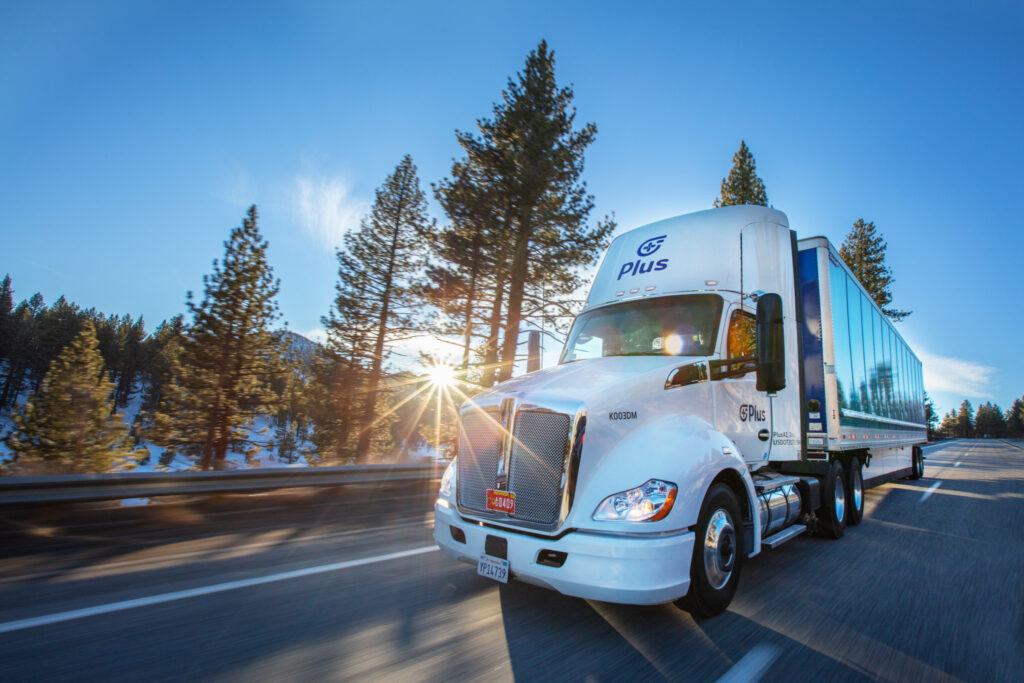Autonomous trucking offers efficiency, environmental benefits
Slashing transport emissions and automating the driving process may seem unrelated, but real-world operations by autonomous trucking firm Locomation have seen GHG emissions reduced by 22%.
That’s according to Cetin Mericli, CEO and co-founder of the company, which has trucks on the road in the U.S. Speaking at ACT Expo, Mericli said other benefits of autonomous trucking include improved safety and efficiency. The convoy system includes two trucks. The lead truck has a driver behind the wheel and leaves a trail of virtual breadcrumbs, so to speak, which the second truck follows while its driver rests in the sleeper.
Mericli said “The outcome is unmatched,” noting the Locomation autonomous system doubles capacity for fleets while increasing driver home time by 500%, improving equipment utilization by 130% and allowing 22 hours of continuous operation per day.

There are an increasing number of ambitious start-ups pursuing Level 4 “eyes off” autonomous trucking. Peterbilt has partnered with Aurora and is delivering loads autonomously from Dallas to Houston, according to Andy Weiblen, director of product planning and strategy with Peterbilt.
“We have a driver and a co-driver to make sure the driver can operate that vehicle and monitor what’s going on outside the windshield,” he said. “The co-pilot is looking at what the sensors are doing and understanding what that automated driver is going to do.”
The automated driver looks at what’s happening as much as 200 yards ahead, he said, and can predict traffic flow that far in advance. For now, Peterbilt and Aurora are focusing on the fair-weather sunbelt states, but plan to take their operations to northern states and Canada in the future. They also plan to transition from hub-to-hub routes to more complex dock-to-dock scenarios.
The technology is needed, Weiblen said, as trucking struggles with a worsening labor shortage and U.S. freight volumes are anticipated to surge 50% by 2050. But autonomous driving technology developers insist drivers shouldn’t worry about being replaced by technology.
“Our solution brings so much positive value to drivers today,” said Mericli. “We are not looking to replace drivers; we’re looking to augment the drivers.”
Shawn Kerrigan, COO and co-founder of Plus, agreed. “Our view is drivers entering the profession today will be able to retire as drivers. By helping to elevate and improve the driving experience, we hope to encourage more drivers to enter the profession and stay in the profession longer.”
Michelle Avary is vice-president – product strategy and government affairs with Einride. It produces a cabless autonomous truck that doesn’t require a driver, promoting a software-as-a-service and capacity-as-a-service business model. Its autonomous truck is electric, producing no tailpipe emissions.
“The future of freight is digital, electric, and autonomous,” she said. The trucks are controlled and overseen by remotely located operators.
“Young people look at it and think that’s really cool,” said Avary.

Now, even the charging process is being automated. “We want to make fueling enjoyable,” said Erin Galiger, senior business development manager with Rocsys North America. It produces robots that automatically locate and plug into the charge port on an electric vehicle. Galiger envisions a future with megawatt charging stations a truck will pull into, then be automatically charged by robots.
“Drivers just park and we do the rest, taking on that ownership and making sure vehicles are ready for their next shift,” she explained. “The vehicle communicates to the robot ‘I’m ready to be charged’,”
Kerrigan said it will be several years before Plus completely replaces the driver. It is currently running trucks on-highway, but will eventually be able to do hub-to-hub driverless deliveries. Benefits today, he said, include a 10% fuel efficiency improvement, enhanced safety, and improved driver comfort. The technology can reduce stress on drivers in certain conditions, such as high winds. It can even solve persistent problems the industry struggles with today, such as bridge strikes.
But challenges remain, and regulatory help will be needed to overcome them. For instance, how can an autonomous truck put out road triangles in the event of a breakdown, or interact with a law enforcement officer? Mericli said exemptions will be required, but those could take four or more years to come through.

Have your say
This is a moderated forum. Comments will no longer be published unless they are accompanied by a first and last name and a verifiable email address. (Today's Trucking will not publish or share the email address.) Profane language and content deemed to be libelous, racist, or threatening in nature will not be published under any circumstances.